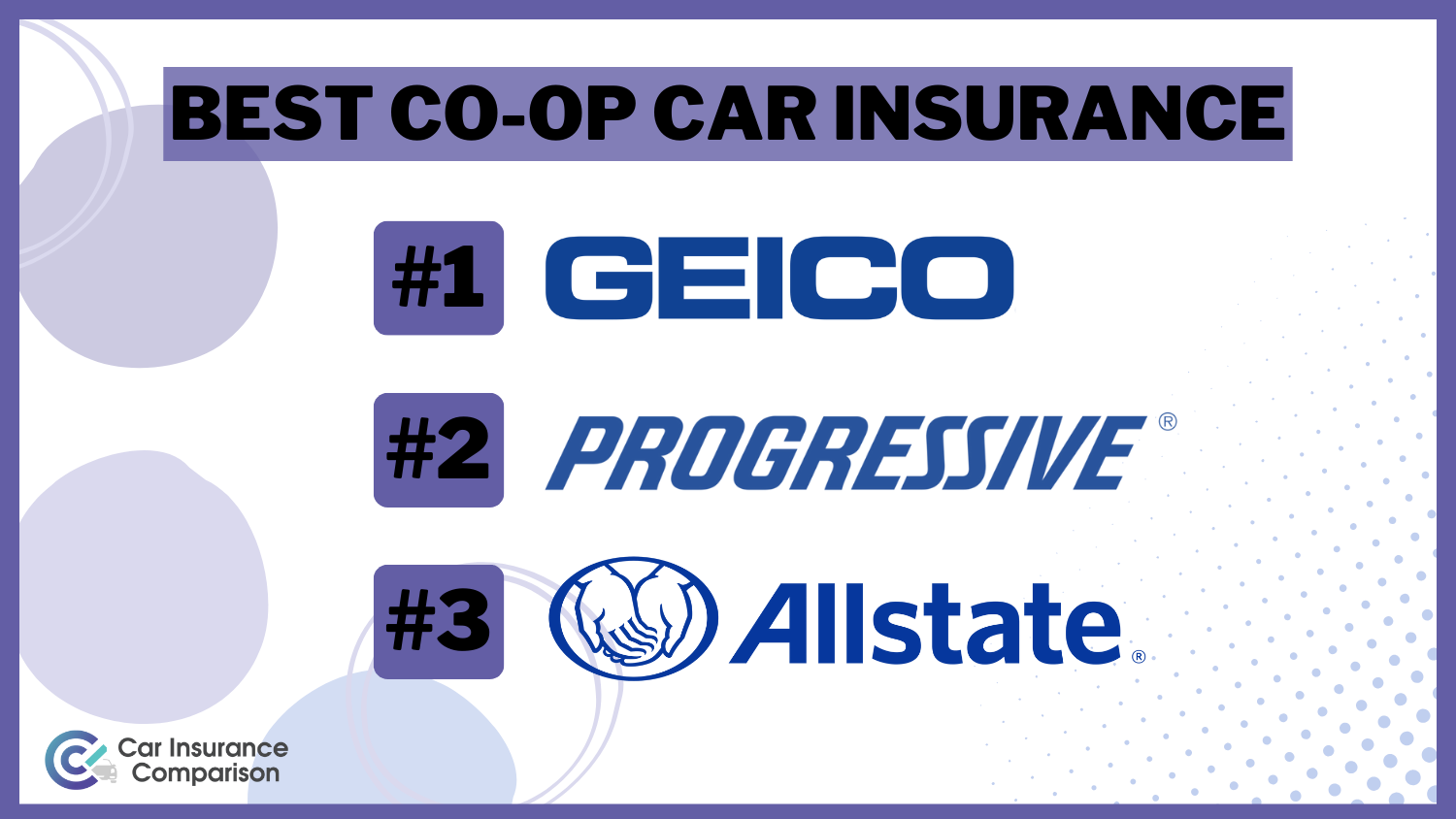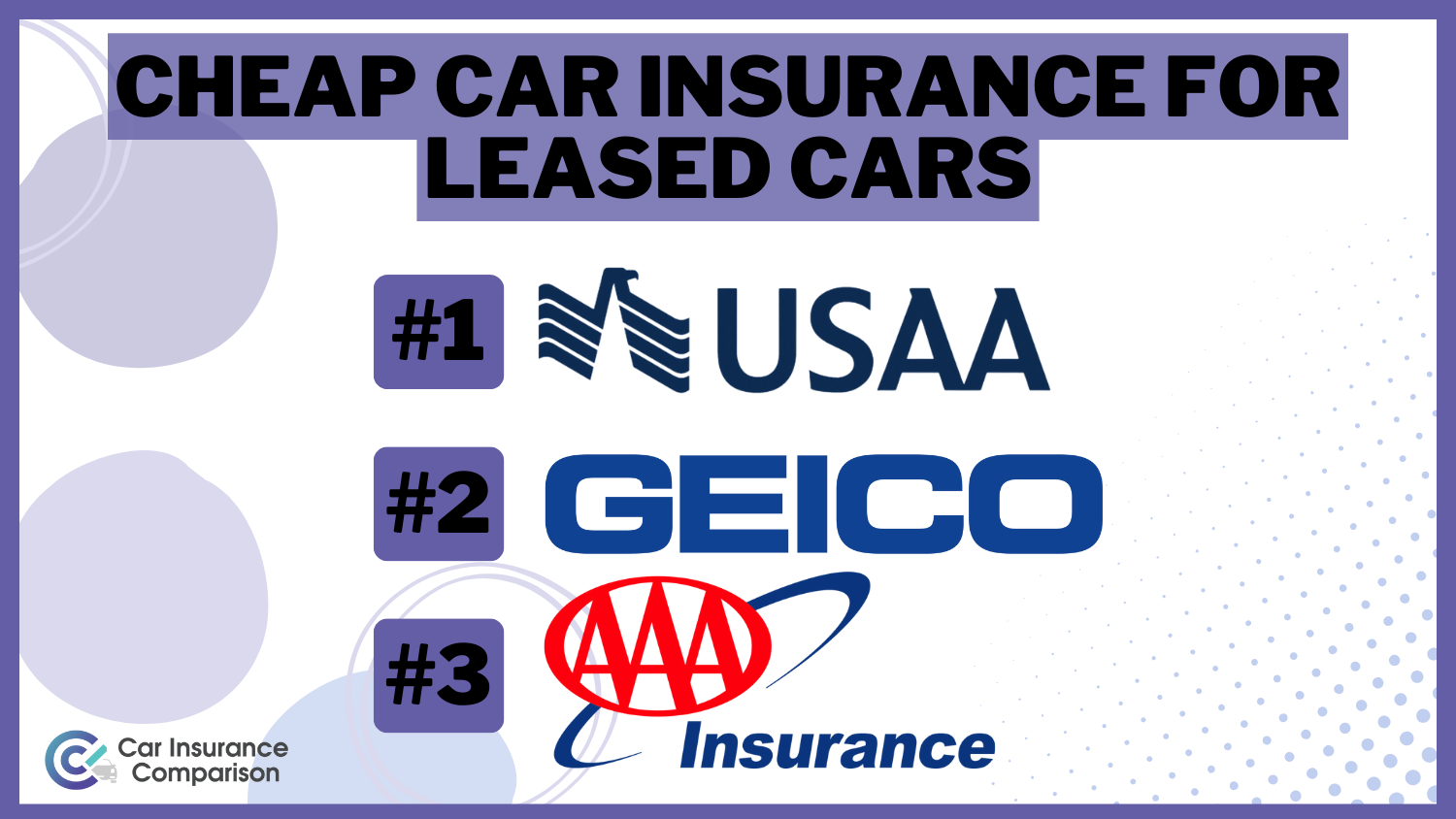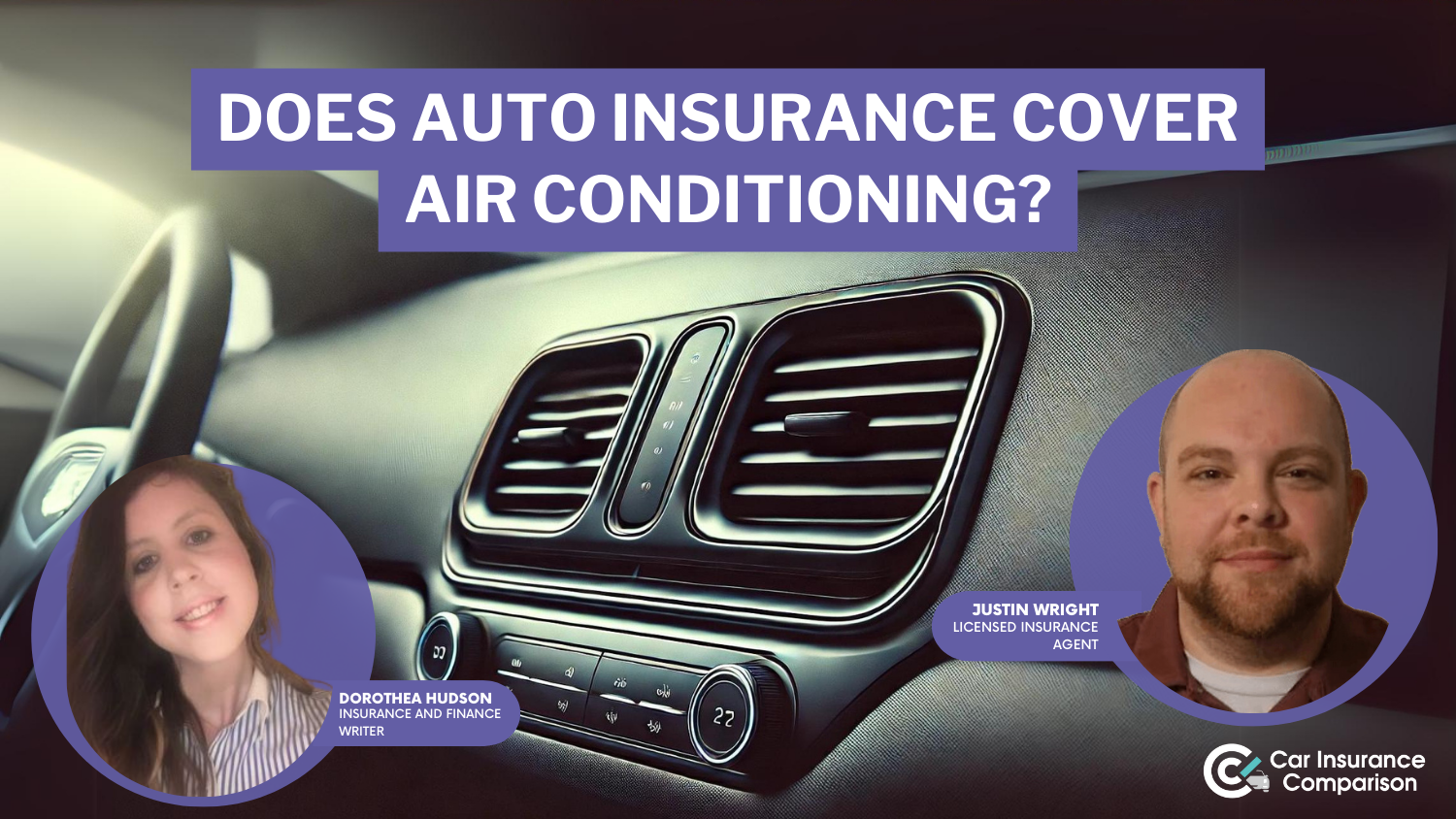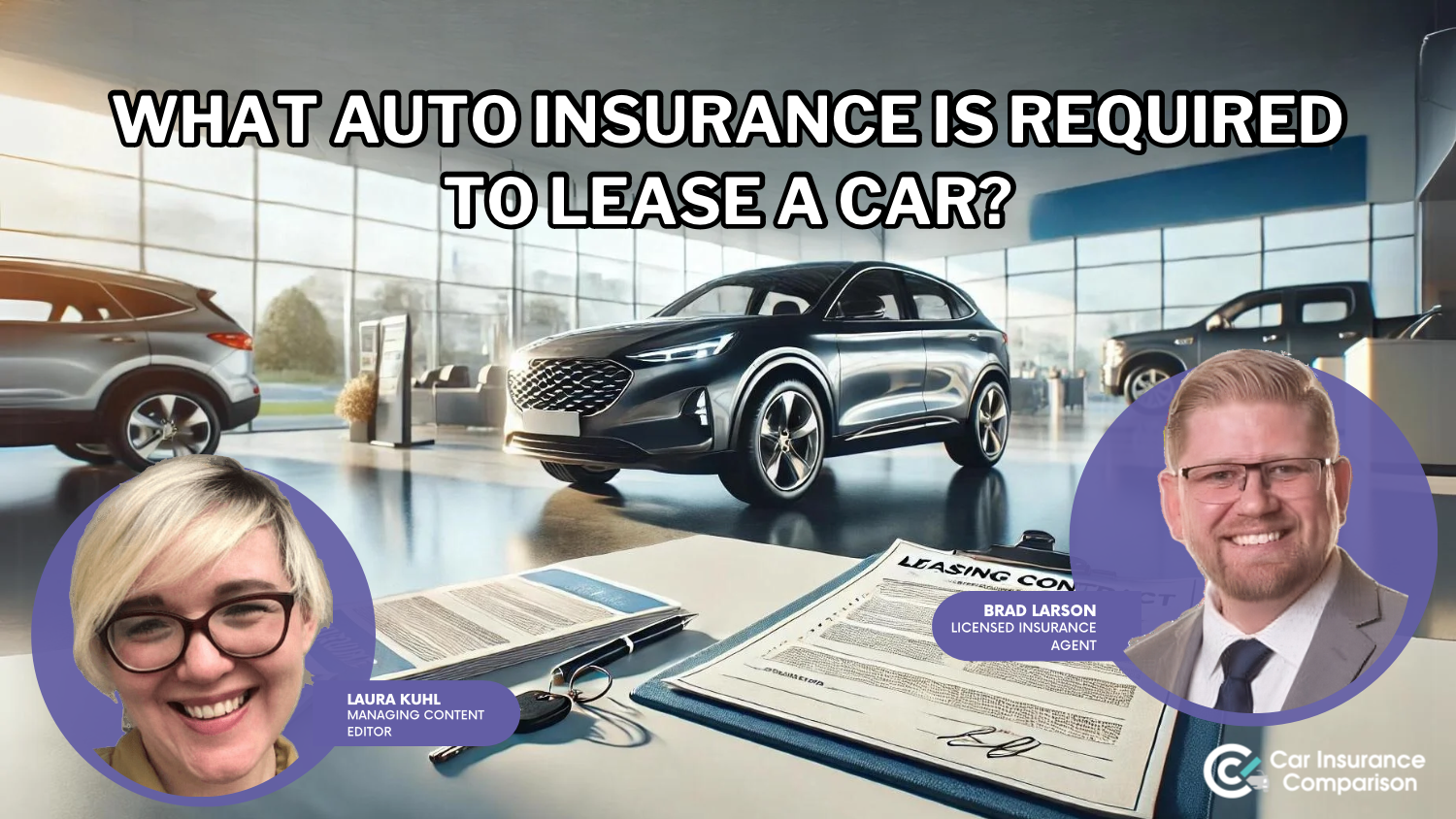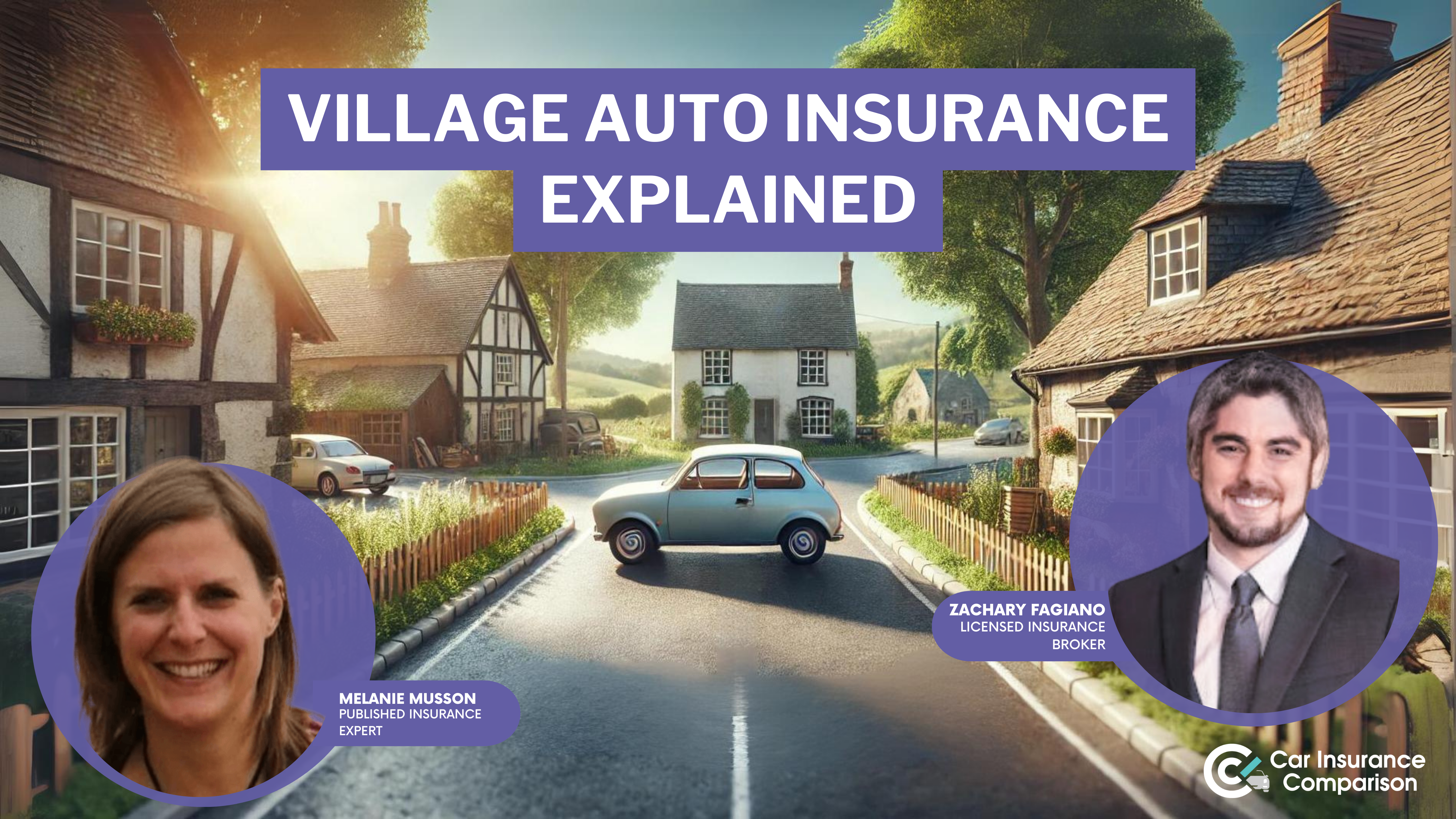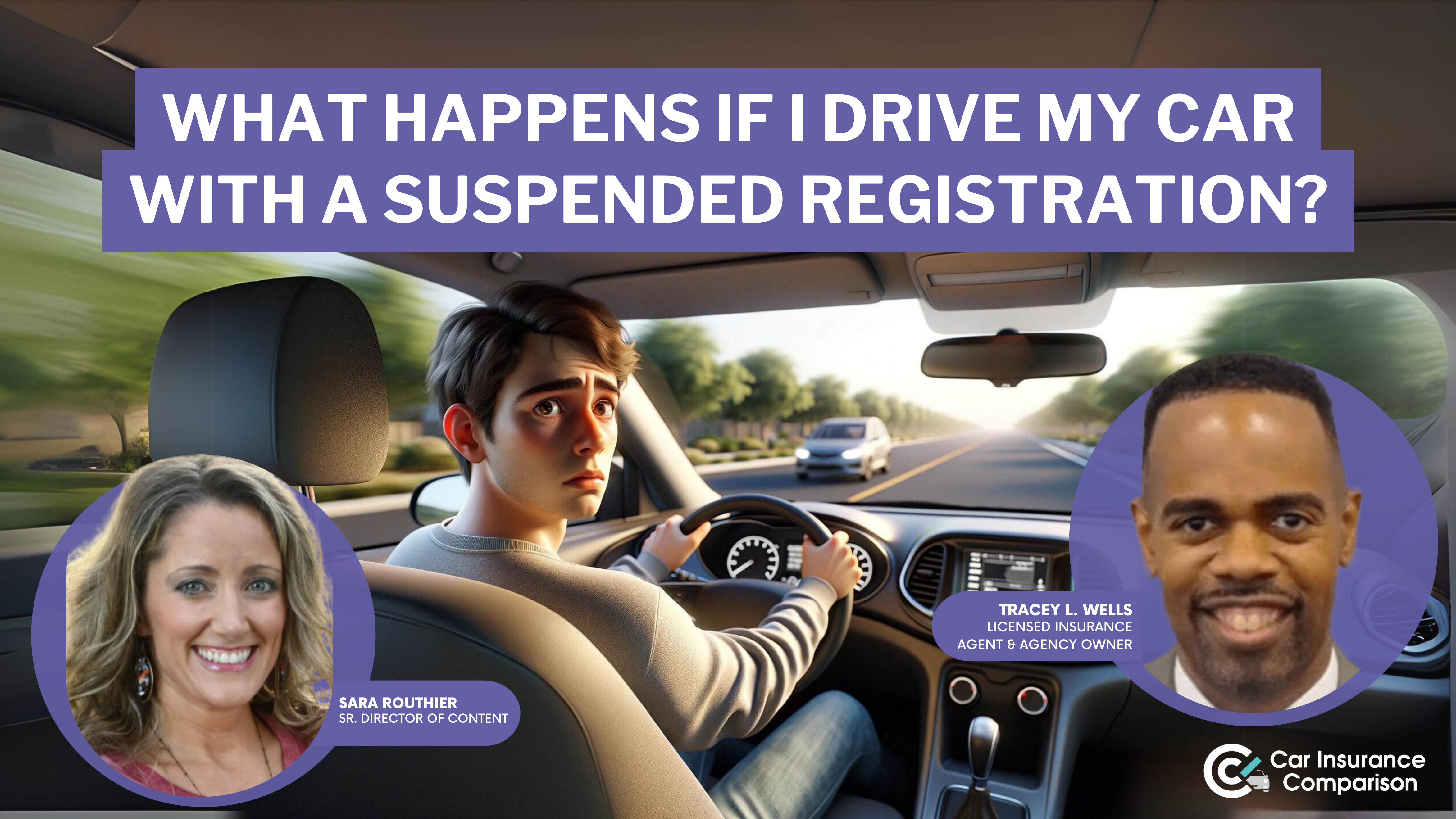Car Insurance Tier System: Explained Simply
A car insurance tier system is used to help calculate car insurance rates. An insurance score of 770 is considered good. Auto insurance coverage tiers refer to the level of coverage you choose.
Read more Secured with SHA-256 Encryption





Table of Contents
Table of Contents


Licensed Insurance Agent
Brandon Frady has been a licensed insurance agent and insurance office manager since 2018. He has experience in ventures from retail to finance, working positions from cashier to management, but it wasn’t until Brandon started working in the insurance industry that he truly felt at home in his career. In his day-to-day interactions, he aims to live out his business philosophy in how he treats hi...
Brandon Frady


Licensed Insurance Agent
Michelle Robbins has been a licensed insurance agent for over 13 years. Her career began in the real estate industry, supporting local realtors with Title Insurance. After several years, Michelle shifted to real estate home warranty insurance, where she managed a territory of over 100 miles of real estate professionals. Later, Agent Robbins obtained more licensing and experience serving families a...
Michelle Robbins
Updated July 2024
- Car insurance companies rate drivers based on a lot of factors to calculate rates
- Your car insurance tier, or car insurance score, is part of what determines rates
- There are three types of car insurance, each with its own rate that adds up to the total
When you shop for insurance, you’re looking for the best auto insurance companies, right? Similarly, insurance companies want to seek the best clients as well. Car insurers operate by gauging risks in potential or active clients with a car insurance tier system.
We understand that the insurance industry can be complex and overwhelming. This is why we will cover tier systems step by step to help you determine which provider is right for you. Before learning more about the tiers for car insurance system, please feel free to type in your ZIP code above to find reasonable rates to suit your needs in your area.
What are the car insurance tiers?
You may be asking, “What is an insurance tier score?” This is a credit rating utilized by insurers to assess any potential customer’s level of risk. With an insurance tier rating, they then determine how much the potential policyholder’s monthly insurance premium will be. Insurance companies use levels to examine you and your driving history. This system eliminates surcharges and replaces them with risk ratings. The tiered system means that one accident won’t cause your individual or household policy to increase overnight. (For more information, read our “Car Insurance Policyholder: Explained Simply“).
Why is my car insurance score so low? The score spans from 200 to 997, and a lower score suggests a greater perceived risk level.
Most insurers divide their drivers into three insurance score tiers:
- Preferred tier: In the preferred tier, the customers have a clean driving record, no lapse in coverage, excellent credit score, and a low number of claims filed.
- Standard tier: These drivers have an average credit score, previous insurance coverage, and either one or two minor traffic violations, and one at-fault accident.
- High-risk or nonstandard tier: These drivers have no previous insurance coverage, a poor credit score, numerous accidents, and have filed several claims.
Now you’re probably wondering, “What is considered good car insurance coverage?” or “What is a good score for auto insurance?” If you have a score of 770 or higher, you are in a good range. If you have a lower score, you are seen as a larger risk and are probably going to be paying higher monthly premiums.
What factors determine your auto insurance premium? There are numerous factors within auto insurance coverage tiers that are considered when determining risk.
There are primary and, occasionally, secondary factors that insurers consider.
Let’s cover the main factors, starting with age. Due to their lack of experience, young and unproven drivers will unavoidably have to pay higher premiums. After about nine years of safe driving, they will see their rates decrease.
This touches on another primary aspect that insurers consider when determining risk, which is a policyholder’s driving history. Other factors include the customer’s credit score, years of experience behind the wheel, insurance history, coverage level, and claims frequency.
Read more: Compare Primary vs. Secondary Car Insurance: Rates, Discounts, & Requirements
So, what is a car insurance tier by definition? It is simply a level at which an insurer can examine you and your credit history. If you’re wondering, “Why is my car insurance so high?” it is likely because your insurer saw you as a risk, based on several factors. Perhaps you are young and inexperienced driver. Maybe you have multiple filed claims on your record. Everything is taken into consideration.
What makes car insurance rates go down? The simplest answer is safe driving over an elongated period. You may also bundle policies, take driver education courses, and take advantage of low mileage discounts. Drive Safely can help you find drivers education classes in your state.
Just about every insurer offers various discounts, so inquire with your insurance agent about how you can knock down your rates.
Naturally the inverse must also be true. How does car insurance go up? Poor driving is the central cause of increasing rates. If you drive safely and take advantage of every discount you can, you will most likely avoid this issue.
Free Insurance Comparison
Compare Quotes From Top Companies and Save
Secured with SHA-256 Encryption
What are the three types of car insurance?
There are also car insurance policy tiers, or car insurance coverage tiers. This is to do with how much coverage you carry. What are the three types of car insurance? Liability auto insurance coverage, collision insurance, and comprehensive car insurance are the three most common types of coverage. Liability insurance protects you in a situation where you cause damage to another’s body or property. This video further explains liability coverage.
Liability coverage doesn’t just cover the policyholder, it also covers any family members that are listed on the policy. Furthermore, this coverage helps you even when you are driving another person’s car, as long as you have permission to do so. A policyholder has the option to buy more than the state-required minimum coverage to protect them in case they get sued.
This next table shows the minimum requirements for liability coverage in each state. In the third column, you’ll see three numbers separated by slash marks. The first number is a limit for one individual, the second is for all persons injured in an accident, and the third is coverage for property damage. Additionally, BI means bodily injury, PD means property damage, UM means uninsured motorist, UIM means underinsured motorist, and MedPay means medical payments coverage.
Car Insurance Coverage Requirements by State
| State | Coverages | Limits |
|---|---|---|
| Alabama | Bodily injury and property damage liability | 25/50/25 |
| Alaska | Bodily injury and property damage liability | 50/100/25 |
| Arizona | Bodily injury and property damage liability | 25/50/15 |
| Arkansas | Bodily injury and property damage liability, personal injury protection (PIP) | 25/50/25 |
| California | Bodily injury and property damage liability | 15/30/5 |
| Colorado | Bodily injury and property damage liability | 25/50/15 |
| Connecticut | Bodily injury and property damage liability, uninsured/underinsured motorist (UM, UIM) | 25/50/25 |
| Delaware | Bodily injury and property damage liability, personal injury protection (PIP) | 25/50/10 |
| Florida | Property damage liability, personal injury protection (PIP) | 10/20/10 |
| Georgia | Bodily injury and property damage liability | 25/50/25 |
| Hawaii | Bodily injury and property damage liability, personal injury protection (PIP) | 20/40/10 |
| Idaho | Bodily injury and property damage liability | 25/50/15 |
| Illinois | Bodily injury and property damage liability, uninsured/underinsured motorist (UM, UIM) | 25/50/20 |
| Indiana | Bodily injury and property damage liability | 25/50/25 |
| Iowa | Bodily injury and property damage liability | 20/40/15 |
| Kansas | Bodily injury and property damage liability, personal injury protection (PIP) | 25/50/25 |
| Kentucky | Bodily injury and property damage liability, personal injury protection (PIP), uninsured/underinsured motorist (UM, UIM) | 25/50/25 |
| Louisiana | Bodily injury and property damage liability | 15/30/25 |
| Maine | Bodily injury and property damage liability, uninsured/underinsured motorist (UM, UIM), medical payments (Medpay) | 50/100/25 |
| Maryland | Bodily injury and property damage liability, personal injury protection (PIP), uninsured/underinsured motorist (UM, UIM) | 30/60/15 |
| Massachusetts | Bodily injury and property damage liability, personal injury protection (PIP) | 20/40/5 |
| Michigan | Bodily injury and property damage liability, personal injury protection (PIP) | 20/40/10 |
| Minnesota | Bodily injury and property damage liability, personal injury protection (PIP), uninsured/underinsured motorist (UM, UIM) | 30/60/10 |
| Mississippi | Bodily injury and property damage liability | 25/50/25 |
| Missouri | Bodily injury and property damage liability, uninsured/underinsured motorist (UM) | 25/50/25 |
| Montana | Bodily injury and property damage liability | 25/50/20 |
| Nebraska | Bodily injury and property damage liability, uninsured/underinsured motorist (UM, UIM) | 25/50/25 |
| Nevada | Bodily injury and property damage liability | 25/50/20 |
| New Hampshire | Financial responsibility (FR) only | 25/50/25 |
| New Jersey | Bodily injury and property damage liability, personal injury protection (PIP), uninsured/underinsured motorist (UM, UIM) | 15/30/5 |
| New Mexico | Bodily injury and property damage liability | 25/50/10 |
| New York | Bodily injury and property damage liability, personal injury protection (PIP), uninsured/underinsured motorist (UM, UIM) | 25/50/10 |
| North Carolina | Bodily injury and property damage liability, uninsured/underinsured motorist (UM, UIM) | 30/60/25 |
| North Dakota | Bodily injury and property damage liability, personal injury protection (PIP), uninsured/underinsured motorist (UM, UIM) | 25/50/25 |
| Ohio | Bodily injury and property damage liability | 25/50/25 |
| Oklahoma | Bodily injury and property damage liability | 25/50/25 |
| Oregon | Bodily injury and property damage liability, personal injury protection (PIP), uninsured/underinsured motorist (UM, UIM) | 25/50/20 |
| Pennsylvania | Bodily injury and property damage liability, personal injury protection (PIP) | 15/30/5 |
| Rhode Island | Bodily injury and property damage liability | 25/50/25 |
| South Carolina | Bodily injury and property damage liability, uninsured/underinsured motorist (UM) | 25/50/25 |
| South Dakota | Bodily injury and property damage liability, uninsured/underinsured motorist (UM, UIM) | 25/50/25 |
| Tennessee | Bodily injury and property damage liability | 25/50/15 |
| Texas | Bodily injury and property damage liability, personal injury protection (PIP) | 30/60/25 |
| Utah | Bodily injury and property damage liability, personal injury protection (PIP) | 25/65/15 |
| Vermont | Bodily injury and property damage liability, uninsured/underinsured motorist (UM, UIM) | 25/50/10 |
| Virginia | Bodily injury and property damage liability, uninsured/underinsured motorist (UM, UIM) | 25/50/20 |
| Washington, D.C | Bodily injury and property damage liability | 25/50/10 |
| West Virginia | Bodily injury and property damage liability, uninsured/underinsured motorist (UM, UIM) | 25/50/25 |
| Wisconsin | Bodily injury and property damage liability, uninsured/underinsured motorist (UM, Medpay) | 25/50/10 |
| Wyoming | Bodily injury and property damage liability | 25/50/20 |
Property damage liability is like bodily injury liability, except it covers damage done to someone else’s car rather than their body. It also includes damage to telephone poles, fences, buildings, and other inanimate objects.
Collision coverage is the next form of mandatory insurance. This pays for damage to the policyholder’s car that was sustained in a collision. Even if a policyholder is at fault in an accident, this coverage will reimburse them for car repair costs. If the policyholder isn’t at fault, their insurer may try to recover the money spent from the at-fault driver’s insurer.
The final mandatory coverage is comprehensive insurance. This reimburses for a policyholder’s loss in the event that anything other than a collision befalls their car. Damage from fire, windstorms, hail, floods, vandalism, riots, deer, and even missiles may be covered by comprehensive insurance. Like liability, this coverage also allows policyholders to purchase more than the minimum amount.
There is optional coverage as well. Uninsured and underinsured motorist coverage both reimburse the policyholder if they are hit by someone who does not have enough coverage or no coverage at all, which is more prevalent than you might think.
Medical payments (MedPay) and personal injury protection car insurance (PIP) pay for the treatment of injuries to the policyholder and their passengers. PIP also covers lost wages and, occasionally, funeral costs.
Now that you know about the car insurance tier system, type in your ZIP code in our tool below to find reasonable rates in your area.
Understanding Car Insurance Rating Tiers and Customer Rating Index
When shopping for car insurance, understanding the various rating tiers and how they affect your premiums is crucial. This guide will explore the different aspects of car insurance rating tiers, customer rating index, and their implications for your coverage.
What are Car Insurance Rating Tiers?
Car insurance rating tiers categorize drivers into different risk levels based on various factors. These tiers impact your insurance premiums and coverage options.
Car Insurance Tier Levels
- Basic Tier: Typically includes drivers with a standard risk profile, resulting in average premiums.
- Standard Tier: For drivers with a moderate risk profile, premiums may be slightly higher than the basic tier.
- Elite Tier: Reserved for drivers with a low risk profile, leading to the lowest premiums and the best coverage options.
Car Insurance Tier List
Insurance companies often use a tier list to determine where you fall within their rating system. This list helps insurers evaluate risk and set appropriate rates.
The Customer Rating Index Tier
The Customer Rating Index (CRI) provides insights into customer satisfaction and service quality. Insurers use this index to gauge their performance and adjust their offerings.
Customer Rating Index Tier Levels
- Elite Tier: Represents the highest level of customer satisfaction. For example, State Farm’s Customer Rating Index Tier Elite 1600 indicates top-tier performance.
- Standard Tier: Reflects average customer satisfaction levels. For instance, State Farm’s Customer Rating Index Tier Elite 1642 shows a solid but not top-tier rating.
- Basic Tier: Indicates lower customer satisfaction, which may affect your overall experience with the insurer.
Notable Ratings
- State Farm Customer Rating Index Tier Elite 1796: Denotes an exceptional rating, highlighting superior customer service and satisfaction.
- State Farm Customer Rating Index: Provides an overview of State Farm’s performance in various tiers, showing their overall reputation.
Auto Insurance Tier System
Auto insurance companies use a tier system to classify drivers based on their risk profiles. Understanding this system can help you find better rates and coverage.
Auto Insurance Rating System
- Comprehensive Rating Group: Assesses the overall risk associated with a driver’s profile and vehicle, impacting the insurance premium.
- Collision Rating Group Meaning: Refers to the risk level associated with collision coverage, affecting how much you pay for repairs after an accident.
Auto Insurance Score Range
The auto insurance score range indicates how insurers evaluate risk. Higher scores generally result in lower premiums and better coverage options.
- High Score: Reflects a lower risk and can lead to lower premiums.
- Low Score: Indicates higher risk, which typically results in higher premiums.
Specific Car Insurance Tier Information
Different companies may have unique tier levels and scoring systems.
Progressive Auto Insurance Tiers
Progressive uses its own tier system to classify drivers based on their risk profile, which affects their premiums and coverage options.
State Farm Insurance Customer Rating Index Tier
- State Farm Customer Rating Index Tier Elite: Represents high customer satisfaction and service quality.
- State Farm Customer Rating Index Tier Elite 1642: Shows a strong performance, indicating good customer feedback and service levels.
Changes in Vehicle Rating Group
Changes in your vehicle rating group can impact your comprehensive coverage and overall insurance costs.
Change in Vehicle Rating Group for Comprehensive Coverage
- Increased Rating Group: May result in higher premiums if your vehicle is categorized into a higher-risk group.
- Decreased Rating Group: Can lead to lower premiums if your vehicle falls into a lower-risk category.
Understanding your car insurance rating tiers and customer rating index can help you make informed decisions about your coverage.
Steps to Evaluate Your Insurance Tier
- Review Your Current Tier: Check your current insurance tier level and rating.
- Compare Ratings: Look at customer rating index tiers to gauge insurer performance.
- Adjust Coverage: Based on your tier and rating, adjust your coverage to optimize costs and benefits.
Steps to Improve Your Rating
- Maintain a Clean Driving Record: Avoid accidents and traffic violations.
- Improve Your Credit Score: Higher credit scores can lead to better insurance rates.
- Shop Around: Compare quotes from different insurers to find the best rates for your tier.
Understanding these aspects will help you navigate the insurance landscape and find the best coverage for your needs.
Navigating Auto Insurance Tiers and Rating Scales
Understanding the various NYS auto insurance tiers and how they relate to your premiums can be crucial for securing the best coverage. The auto insurance tiers system, which includes different auto insurance tier levels, helps insurers determine your risk profile and set appropriate rates.
Your placement in the auto insurance tier list can affect your overall insurance costs and options. Insurers use the auto insurance score scale to assess your risk and categorize you into different car insurance rating groups. This rating impacts your premiums and coverage.
For example, the State Farm’s Customer Rating Index Elite Tier reflects the highest level of customer satisfaction, indicating superior service and possibly influencing your decision to choose or switch insurers. Understanding the car insurance rating scale and how it applies to different insurance companies can help you make more informed choices about your coverage.
Free Insurance Comparison
Compare Quotes From Top Companies and Save
Secured with SHA-256 Encryption
Understanding Insurance Rating Groups and Tiers: What You Need to Know
Grasping the car tier meaning is crucial for understanding insurance premiums. It refers to how vehicles are categorized based on risk factors, affecting insurance costs. These factors include the car’s make, model, safety features, and repair costs. Understanding the car tier meaning helps you navigate insurance options effectively.
What is an Insurance Rating Group?
Insurance rating groups categorize drivers and vehicles into different risk levels to determine insurance premiums. These groups help insurers assess the risk associated with a policyholder and set appropriate rates based on their risk profile.
- Liability Rating Group: Refers to the classification of drivers based on their risk related to liability coverage. Examples include:
- Liability Rating Group 4: A higher-risk category that may result in higher premiums.
- Liability Rating Group 5: Generally associated with even higher risk and consequently higher rates.
The Insurance Driver Rating System
Insurance driver ratings are used to evaluate a driver’s risk profile and set insurance premiums accordingly. The rating is determined based on several factors including driving history, claims frequency, and credit score.
- Insurance Score Chart: A visual representation of how different factors impact your insurance score. Higher scores typically indicate lower risk and lower premiums.
- Insurance Tier Levels: Categorize drivers into different tiers based on their risk profile. For example:
- Tier 1 Insurance: Represents the lowest risk category, often leading to lower premiums.
- Tier 2 Liability: Represents a moderate risk, with premiums higher than Tier 1 but lower than higher tiers.
Insurance Tier Levels Explained
Understanding insurance tier levels helps you comprehend how insurers evaluate risk and set premiums.
- Tier 1 vs Tier 2 Insurance:
- Tier 1 Insurance: Lower risk, typically associated with better driving records and higher credit scores.
- Tier 2 Insurance: Higher risk compared to Tier 1, which may include factors like a history of accidents or lower credit scores.
- Tier Factor Premium: Refers to how different tiers impact the premium rates. Higher tiers usually result in higher premiums.
Free Insurance Comparison
Compare Quotes From Top Companies and Save
Secured with SHA-256 Encryption
Car Insurance Tiers and Their Impact
Car insurance tiers categorize coverage levels and help determine how much you will pay based on your risk profile.
- Tiers of Car Insurance:
- Top-Tier Insurance Companies: Companies that offer the highest level of coverage and service. They often have competitive rates and comprehensive coverage options.
- Tier of a Car: Refers to how the type of vehicle affects the insurance rate. Luxury and high-performance cars often fall into higher tiers.
Case Studies of Insurance Providers
Different insurance providers have varying tier systems and rating groups that influence premiums and coverage options.
- NYCM Insurance: Known for its specific rating groups and tier system.
- Progressive Insurance Tiers: Progressive uses its own tier system to classify drivers and determine rates.
- Progressive Policy Tiers: Indicate different levels of coverage and associated costs.
- State Farm Insurance:
- State Farm Accident Forgiveness: A feature that may help avoid rate increases after a first accident.
- State Farm Comprehensive Rating Group: Reflects the risk profile related to comprehensive coverage.
- State Farm Customer Rating Index: Measures customer satisfaction and service quality.
- State Farm Elite Tier: Represents the highest level of customer satisfaction and coverage options.
Understanding Coverage Types
Different types of coverage impact your insurance tiers and overall costs.
- PD Car Insurance Review: Reviews on property damage coverage and its impact on insurance rates.
- Insurance Rating Group: Helps determine the cost and type of coverage you need.
Navigating insurance rating groups and tiers can help you make more informed decisions about your car insurance. By understanding how different factors impact your premiums and coverage, you can choose the best insurance options for your needs.
For personalized insurance quotes and to compare rates, enter your ZIP code in the tool provided above.
Free Insurance Comparison
Compare Quotes From Top Companies and Save
Secured with SHA-256 Encryption
Understanding Meaning of Tier in Insurance and Vehicle Rating Groups
Meaning of tier in insurance refers to the classification system used by insurers to categorize drivers and vehicles into different risk levels, which affects insurance premiums. Each tier reflects the risk associated with a driver or vehicle.
One aspect of this system is the Vehicle Rating Group, which helps insurers determine how the type and value of your vehicle impact your insurance rates. Higher rating groups often lead to higher premiums due to increased risk factors.
A tier exception can occur when specific circumstances or additional factors allow for an adjustment in the standard tier classification, potentially influencing your insurance rate. Understanding these concepts can help you better navigate your insurance options and possibly find ways to reduce your premiums.
Case Studies: Exploring the Impact of the Car Insurance Tier System
Case Study 1: Emily’s Excellent Record
Emily is a 35-year-old driver with a clean driving history and no previous accidents or claims. She has maintained a high credit score and drives a safe and reliable vehicle.
Due to her excellent record and low-risk profile, Emily is placed in the top tier of the car insurance tier system. As a result, she enjoys lower insurance premiums compared to drivers in higher-risk tiers.
Case Study 2: Mark’s Multiple Accidents
Mark is a 22-year-old driver with a history of multiple accidents and traffic violations. He has a low credit score and drives a high-performance sports car.
Due to his risky driving behavior and high-risk profile, Mark is placed in a lower tier of the car insurance tier system. As a result, he faces significantly higher insurance premiums compared to drivers in lower-risk tiers.
Case Study 3: Sarah’s Steady Driving
Sarah is a 45-year-old driver with a consistent and safe driving record. She has a good credit score and drives a mid-range sedan. Sarah falls into the average-risk tier of the car insurance tier system.
While her premiums are not as low as those in the top tier, she still enjoys relatively affordable insurance rates due to her responsible driving behavior.
Case Study 4: Alex’s Inexperience
Alex is a 19-year-old driver who just got their driver’s license. As a young and inexperienced driver, Alex is placed in a higher-risk tier of the car insurance tier system.
Despite having a clean driving record, their lack of driving experience contributes to higher insurance premiums. As Alex gains more driving experience and builds a positive record, they may eventually move to a lower-risk tier and enjoy lower premiums.
Frequently Asked Questions
What is 3F motor injury Insurance?
3F Motor Injury Insurance is a type of insurance coverage that protects against injuries sustained in a motor vehicle accident. It typically covers medical expenses and other related costs for injuries resulting from an accident involving the insured vehicle.
What is a good Customer Rating Index for State Farm?
A good Customer Rating Index (CRI) for State Farm is typically one that reflects high levels of customer satisfaction and service quality. While the specific index can vary, a high rating generally indicates that State Farm is performing well in terms of customer service, claims handling, and overall satisfaction.
Is State Farm a good insurance company?
State Farm is generally considered a reputable and reliable insurance company. It is one of the largest and most well-known insurers in the United States, offering a wide range of insurance products including auto, home, and life insurance. State Farm is known for its extensive network of agents, strong financial stability, and comprehensive coverage options.
Does State Farm have accident forgiveness?
Yes, State Farm offers accident forgiveness as part of some of its auto insurance policies. Accident forgiveness is a feature that can prevent your first accident from causing an increase in your insurance rates. This benefit is often available to drivers with a good driving record and may be included in certain premium plans or available as an optional add-on.
How is State Farm insurance rated?
State Farm insurance is rated highly by various industry ratings agencies and consumer review platforms. It typically receives strong marks for financial stability, customer service, and claims handling. Ratings can vary by source, but State Farm generally performs well in overall customer satisfaction and reliability.
What is a car insurance tier system?
The car insurance tier system is a classification method used by insurance companies to categorize drivers into different risk groups based on various factors such as driving history, age, type of vehicle, and more. Each tier represents a different level of risk, which affects the cost of insurance premiums.
How does the car insurance tier system work?
Insurance companies analyze several factors, including driving record, claims history, credit score, age, and other demographic information to assign drivers to different tiers. Drivers with a higher risk profile are placed in higher tiers and generally pay higher insurance premiums, while those with a lower risk profile are placed in lower tiers and pay lower premiums.
Can I improve my tier and lower my insurance premiums?
Yes, in many cases, you can improve your tier and lower your insurance premiums. By maintaining a clean driving record, avoiding accidents, and adhering to traffic laws, you can demonstrate responsible driving behavior, which may result in a lower tier placement and reduced premiums. Additionally, improving your credit score and maintaining a good credit history can also positively impact your insurance tier.
Can I switch insurance companies to change my tier?
Yes, switching insurance companies can potentially lead to a change in your tier placement. Each insurance company has its own criteria and algorithms for determining tiers, so you might be classified differently by a different insurer. However, it’s important to note that changing companies solely for the purpose of tier placement may not always guarantee a better outcome, as other factors such as coverage options and customer service should also be considered.
Get a FREE Quote in Minutes
Insurance rates change constantly — we help you stay ahead by making it easy to compare top options and save.


